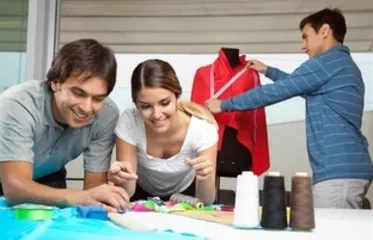Parent-child yoga is the first choice for the May Day holiday
Take advantage of the May Day holiday to do "parent-child yoga" with children, which not only exercises the body, but also allows you to communicate well with your children's body and mind. We ask senior yoga instructors to teach you some basic "parent-child yoga" movements, which can be practiced at home or attended special courses in a yoga studio. What needs to be reminded is: Pay attention to safety when practicing, and do not pay special attention to whether each action is done properly. The key point is to strengthen the inner communication and interaction between parents and children through such exercises.

Lotus seat
When starting parent-child yoga practice, you can sit in a lotus seat and place the child's hand on the palm of your mother. On the one hand, the purpose of this is to allow both mother and children to calm down, close their eyes and feel each other quietly. At the same time, this sitting posture allows children to be close to their mother's heartbeat, which will also bring a sense of security.
Lotus variant
This is a lotus seat variant. You can hug the child on your chest to let the child feel the warmth of their mother. You can also gently raise the child's hands high and do some simple warm-up movements.
downward dog
The mother used a kneeling posture. The child supported the ground with both hands, stepped on her mother's shoulders, and stretched her arms to support the body. This action can help children exercise their arms and also help develop their internal organs.
boat-type
When doing this action, you can adjust the distance between your mother and the child in advance. The child and your mother lift their feet together, step on the soles of their feet together, hold your hands at the same time, and push against each other hard.
This action mainly exercises the abdominal muscles and also protects the spine.
Simple Reverse Arrow Style
Mom bends her legs and lies on her back on the mat, allowing the child to lie on her mother's knees. Mother and son hold hands with each other. The mother's legs slowly straighten up and lift the child high.
This action is for the mother's abdominal and pelvic exercises, and also increases the interest of parent-child yoga exercises.
headstand
Mom bends her legs and puts them on a supine mat, allowing the child to lie on her mother's knees, so that when the child lowers her head, she can rest her head on her mother's abdomen. My mother slowly straightened her legs upward and supported the child into a headstand posture. Tell the child in advance to hold her mother's legs tightly. The mother will hold the child's waist and crotch with both hands, and move slowly to prevent him from being injured if he applies too much force.
This action is to exercise children's cerebellar balance ability.
Semi-spinal torsion
The mother and daughter sat on the mat, with one leg in a coiled position, the other leg crossed the coiled leg and stepped on the ground, placing one hand on the top of their head and twisting their bodies. This action can also allow the mother and daughter to sit opposite each other and twist their bodies backwards.
aeroplane
Mom takes a recumbent position and lies on the mat, bends her legs, and lets the child stand between her mother's feet. The mother's feet are on the child's groin, and the mother and son hold their hands tightly. My mother slowly raised her legs and hands upward, and the child was lifted up. During this process, mothers should also teach children to straighten their backs and tighten their buttocks. When your mother's legs are straightened and the child's body is almost in a straight line, tell the child to look forward. Hold this position for a while, then slowly retract until the child is put down smoothly.
Airplane style is very helpful for strengthening children's spines and preventing humpbacks. It can also help children grow taller. Like the simple inverted arrow pose and headstand, as long as children practice off the ground, they can enhance their sense of balance. But you must pay attention to safety when doing this action, so you can try to practice first.
tree pose
Mom and the child stood with their feet together on the mat. The child straightened his body and lifted his right leg, stepped on the side of his left knee, raised his hands up and folded his palms, and the mother held the child's hand from behind.
Tree exercises can help children straighten their spine and prevent hunchback.
door bolt type
Mom and the children knelt on the mat on one leg, straightened the other leg, and stretched one arm upward and stretched the side waist.
This action has the effect of stretching the intercostal muscles and increasing the elasticity of the waist muscles for both mother and child, and improving the cardiopulmonary function of adults and children.
Back Snake
complete snake
Snake exercise mainly strengthens back muscles, regulates the autonomic nervous system, and has a certain effect on improving sleep.
The full snake pose is more interesting. It will be more fun to do if the children lie on their mother's back and lift up as the mother completes the action of supporting her upper body with both hands on the ground.
Spinal extension
Mom straightened her legs and sat on the mat, let the child stand on the mat back to back with her mother, holding hands with each other, and the mother's upper body moved forward and downward. The child lay down on her mother's back.
This action, like semi-spinal torsion, stretches and exercises the back. It has the effect of squeezing and massaging the internal organs. For mothers, it can also adjust the endocrine balance. (Internship Editor: Yan Lili)